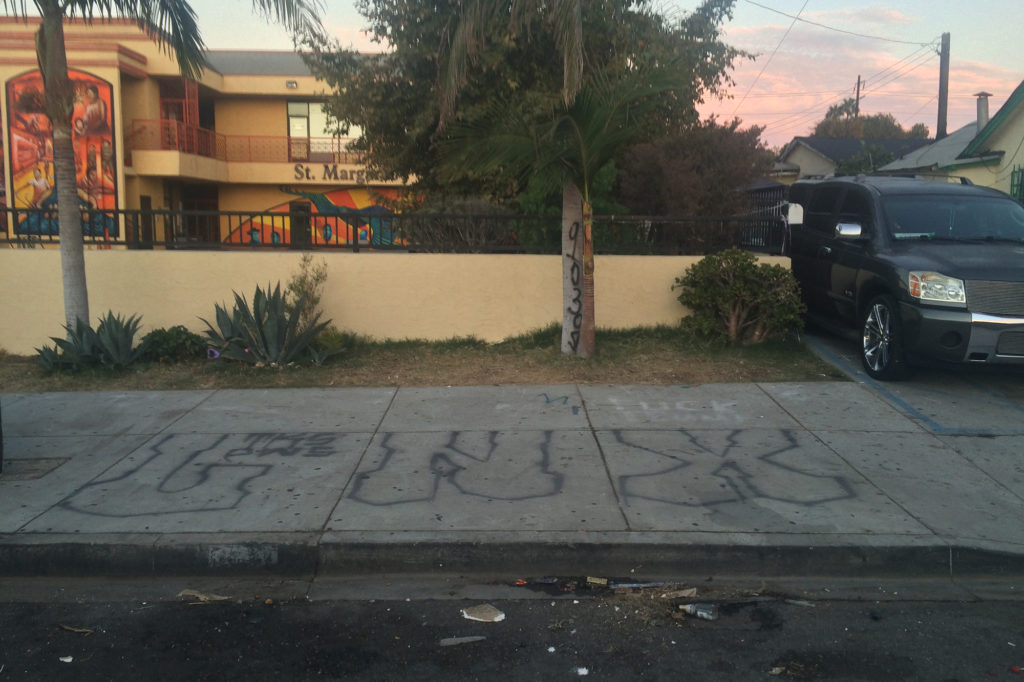A notorious LA gang nearly ruined this teen’s life. He’s taking it back.

When Jose joined a street gang in Los Angeles, he just wanted to chill and have a good time with his friends. He didn’t know what he was getting himself into.
“I didn’t really think about it,” said Jose, who asked to be identified with a pseudonym for fear of retaliation from members of his former gang. “I was young. I didn’t know any better.”
It would take five years, two arrests and the help of a local nonprofit to free him from the grip of a gang. In those years, Jose experimented with drugs, was caught with a gun and was stabbed by a rival.
There are about 450 active criminal organizations in the Los Angeles area with more than 45,000 members, according to statistics from the Los Angeles Police Department. Experts say that in this city, street gangs date back to the 1940s and originated from racism against Mexican immigrants. To this day, Latinos make up the vast majority of people in gangs nationwide – about 45 percent of all gang members in 2011, according to the most recently available statistics from the U.S. Department of Justice.
With the prevalence of street gangs in Southern California, nonprofit groups like New Directions for Youth have cropped up in recent years in hopes of helping people like Jose turn their life around.
“A lot of these youth don’t have father figures so they look for it in the streets not knowingly,” said Anthony Castellones, a mentor with NDFY. “They are looking for some sort of validation or a male father figure to accept them.”
Street gangs give members a sense of acceptance. Sometimes, people even need to join them to survive in rough parts of the city or to protect their family and neighbors from intruders. And in some cases, teens join to impress romantic interests, according to Thomas Ward, an anthropology professor at the University of Southern California, Los Angeles.
They’re basically an adaptation tool for young people who grow up in hostile environments.
***
Once Jose joined, he began to get into more and more trouble.
Jose, who is in his teens but asked the Latino Reporter to withhold his age for fear of being identified, began using drugs like methamphetamine and pills. His days would often start and end with alcohol.
One night, about a year after the initiation, he was hanging out with his friends on the block when a rival gang member jumped out of a car and stabbed him.
He survived the attack. He felt invincible.
“They came looking for trouble,” Jose said. “They found it.”
Jose was arrested twice after that. The first time, it was for vandalism. Then, he was arrested for having a gun illegally. The second run-in with police really shook him up.
He was in juvenile detention for six months. The whole time he was there, he worried about his loved ones.
“I’m putting my family through a lot of stuff for no reason,” Jose said. He also thought about the things that could have happened that night.
“It could have been…something worse rather than me doing 6 months,” he said.
His mom told him that it was a blessing that he was in jail. That she would rather see him alive and safe in a cell than dead.
At the time, the idea seemed crazy to Jose. But then he realized she was right.
His mother declined to be interviewed for this story. Jose said she feels uncomfortable talking about her son’s past.
******
In jail, Jose had time to reflect on his life and the choices he had made.
He began to realize the pain he was putting his loved ones through and wanted to stop before things got worse.
“My family means a lot to me,” he said. “I thought of my family before anything – I mean aside from just myself because I don’t want to be doing time.“
So he made a choice. He decided to get out.
*****
It wasn’t easy for him to step away from the gang. Slowly, he cut his connections with his old friends about a year after he left jail. He was so tired of living that life that he wasn’t scared of the consequences.
The program aims to serve at-risk youth and their families, according to the New Directions for Youth website. It helps people from the ages of 10 to 24.
Castellones said they mentor around 20 teenagers and young adults. Some of them, he says, interact with adults in a way they might have never had the chance to.
“This program has shown youth a different perspective in life because a lot of them didn’t get the chance to do a lot of things – whether it be just going to the beach, ” Castellones said.
***
After Jose got out of jail, his probation officer introduced him to Castellanos. They started to hang out together.
The program reintroduced him to the community in a healthy way and supported him as he transitioned back to real life. Castellones would take the teen out to eat and church, sharing his own experiences with him.
Castellones said he’s sure Jose will go far in life with the help of God and his hard work.
“They helped me out a lot,” Jose said. “They were pretty much there for me when I first came out of (jail).”
Jose graduated from high school and is now attending community college. He said his dream after graduating is to attend the University of California Los Angeles, where he will pursue a career in optometry.
Jose’s life hasn’t been easy because of the bad decisions he has made.
But he’s determined to have a better future.
